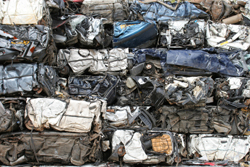Simpler structures for improved auto recycling
Although polymer closed loops in the automotive sector are currently performing to target, future materials selection and application will become more complicated, as efforts continue in the design and development of lighter, more economical vehicles. The increased use of polymers in car components can help efforts to reduce vehicle weight and save on fuel consumption. However, this presents a challenge when considering degraded materials recycling options for vehicles that have ended their life cycle. End-of-life vehicle (ELV) components are today recovered and reused without central direction or regulation. Seeking to stay ahead of looming problems in this area, the EU is working to put the mechanisms in place that will drive down the waste generated. The problem lies in resolving the technical difficulties that present when sorting polymers and multi-component polymer car parts. Multi-component structures are favoured thanks to low cost and enabling physical properties. But at the very end of the production-use-disposal line, recovering these materials is actually very costly and energy intensive. ċċThe 'Controlled closed loop recycling for life-cycle optimised industrial production' (Conclore) project aimed to develop a viable, low-emission system for manufacturing 100 %-recyclable single-component car interior products. Materials can be recovered at the end of the vehicle's useful life and be recycled into another product — in any sector. By focusing on modifications to the production of automotive parts, the concept involved reintegration of recycled polymer material with quality equal to that of virgin material. The EU-funded Conclore project offered the means of 100 % plastic material recovery in combination with a new product life-cycle management concept. By identifying recyclable parts and classifying material quality, team members established the advanced controlled closed-loop recycling (CCLR) model. This can also be applied to the remanufacturing of automotive polymer components. Having achieved all goals, the Conclore project contributed to efforts to reduce environmental impact and the waste resulting from ELV dismantling. Being able to re-manufacture and use ELV components also has positive economic consequences.







